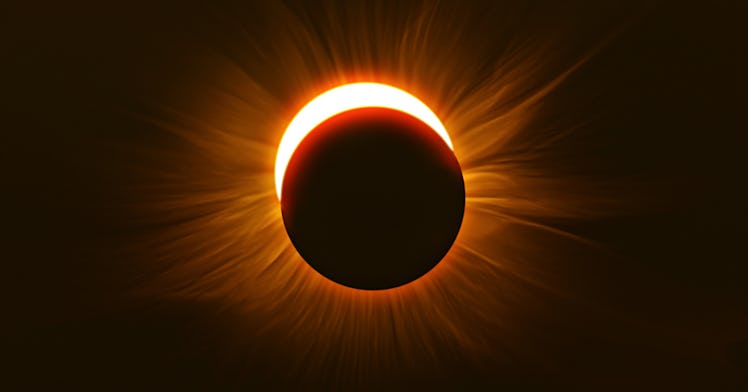A Rare Mini Solar Eclipse Is Right Around the Corner
Time to mark your calendars.

For families who love watching sky events with the kids, there’s a fun one coming up soon. A mini-solar eclipse is going to be viewable in a few days, so mark your calendars and read to find out everything you need to know to watch it. Unfortunately for North Americans, catching it in real life might be pretty difficult — but if you’re elsewhere in the world, you’re in luck.
There’s a mini-solar eclipse coming
Mini or partial solar eclipses are always fun to catch in the sky because they don’t happen too often. Just like full solar eclipses, these don’t show up as often as other sky events, which makes them special.
In a solar eclipse, the moon moves between the sun and earth which casts a shadow. The shadow either fully or partially blocks the sun’s light in some areas and instead of the super bright ball in the sky, it’s a dark ball with a bright ring around it.
In a partial or mini solar eclipse, the moon and sun aren’t fully aligned. This creates a different look, instead of being fully blocked, the sun looks like there’s been a bite taken out of it.
When can I watch the mini-solar eclipse?
The next mini-solar eclipse is set to happen on the evening of Saturday, April 30. It will be more easily visible for the areas around the Pacific and Southern oceans, Antarctica, and southern South America.
“The deepest part of the eclipse is almost due south of the southern tip of South America at 20:41 UTC,” writes EarthSky. “The partial eclipse remains visible for the last location along its narrow path until 22:37 UTC.”
Safety guidelines to follow to safely watch the mini-solar eclipse
Just like a full solar eclipse, a partial or mini eclipse has some very important safety guidelines to follow if you want to safely be able to take a peek. It’s never safe to look directly at the sun, ever, but when there’s a solar eclipse, we might be more inclined to do so – but it’s only safe with a solar filter.
“When watching a partial solar eclipse, you must wear solar viewing or eclipse glasses throughout the entire eclipse if you want to face the Sun,” NASA states. “Solar viewing or eclipses glasses are NOT regular sunglasses; regular sunglasses are not safe for viewing the Sun.”
If you don’t have solar viewing glasses, you can look at it indirectly through a pinhole projector, which could be a fun craft to make with the kids ahead of time. All you need on hand is some white card stock, aluminum foil, tape, and a paper clip – and a tutorial from NASA to walk you through all the steps.